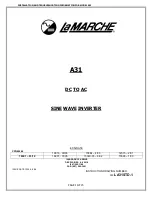
21
used to alleviate this.
Choose Layer 1, 2 or 3 for the counter, this will
determine how my bytes from the Ethernet frame are to
be included in the calculations.
Layer 1:
Layer 2:
Layer 3:
Pr DA to CRC + IFG
Frames DA to CRC
Frames DA to CRC – 18
(- 4 if frame is tagged)
OSI Level Used in
Calculations
(Open Systems
Interconnect, referring to
the seven layers for
TCP/IP)
Explanations:
Preamble
DA
CRC
IFG
= 8 bytes
= EtherNet Destination Address
= EtherNet Checksum
= 12 bytes
Unit Rate Control
Enable/Disable
Allows the end user to globally configure all Bandwidth
settings when enabling Unit Rate Control (Flow Control).
If the END device connected to the port also has Flow
Control enabled, this will ensure packets will not be
dropped.
*OSI NOTES
The Bandwidth Limit functions can be adjusted to only count the Layer 1, 2, or 3 portions of
the physical line rate. Layer 1 is used to relate Bandwidth to the physical line rate where a
100BaseT Ethernet line can carry a MAX bandwidth of 100Mbps. Layer 2 may be more useful
when the Ethernet Frame may be carried over several different physical protocols such as
SONET or SDH. Only the bandwidth required by the Ethernet frame is counted, making this
a more consistent number over different protocols. Layer 3 counting could be used when a
relationship to the actual customer data or line payload is required. If a 10 Mbps customer
file needs to be sent in one second, then a minimum bandwidth limit of 10Mbps would need
to use Layer 3 counting to allow this.
It must be noted that only Layer 1 counting is not affected by the size of the Ethernet
frame. At 64 byte Ethernet frames, the MAX bandwidth the line can support at
Layer 2 is only 76.2% of the line rate. This maximum falls to 54.8% of the line rate
when counting is further limited by only counting Layer 3 payload data.
















































